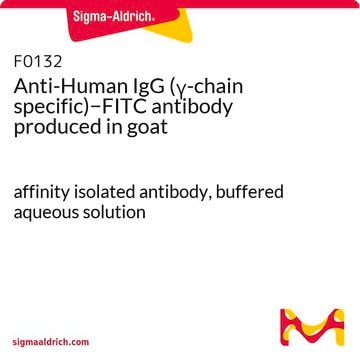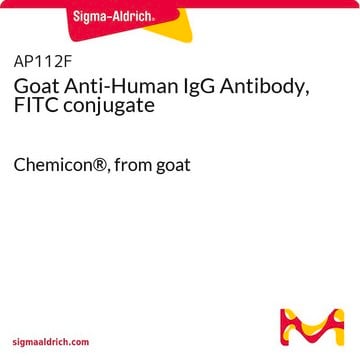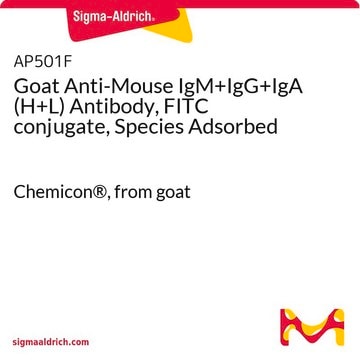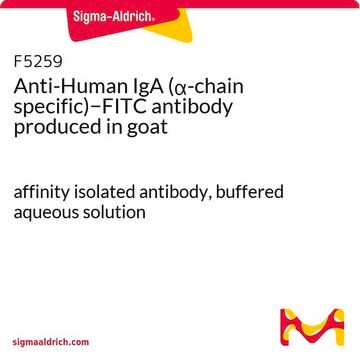F6380
Anti-Human IgG (γ-chain specific)−FITC antibody produced in goat
IgG fraction of antiserum, buffered aqueous solution
About This Item
Prodotti consigliati
Origine biologica
goat
Coniugato
FITC conjugate
Forma dell’anticorpo
IgG fraction of antiserum
Tipo di anticorpo
secondary antibodies
Clone
polyclonal
Forma fisica
buffered aqueous solution
tecniche
direct immunofluorescence: 1:32
Temperatura di conservazione
2-8°C
modifica post-traduzionali bersaglio
unmodified
Cerchi prodotti simili? Visita Guida al confronto tra prodotti
Descrizione generale
Anti-Human IgG (γ-chain specific)-FITC antibody is specific for human IgG subclasses. Whole antiserum is fractionated and then further purified by ion exchange chromatography to provide the IgG fraction of antiserum. Goat anti-human IgG is conjugated to Sigma Fluorescein Isothiocyanate (FITC).
Immunogeno
Applicazioni
Stato fisico
Esclusione di responsabilità
Not finding the right product?
Try our Motore di ricerca dei prodotti.
Codice della classe di stoccaggio
10 - Combustible liquids
Punto d’infiammabilità (°F)
Not applicable
Punto d’infiammabilità (°C)
Not applicable
Certificati d'analisi (COA)
Cerca il Certificati d'analisi (COA) digitando il numero di lotto/batch corrispondente. I numeri di lotto o di batch sono stampati sull'etichetta dei prodotti dopo la parola ‘Lotto’ o ‘Batch’.
Possiedi già questo prodotto?
I documenti relativi ai prodotti acquistati recentemente sono disponibili nell’Archivio dei documenti.
Il team dei nostri ricercatori vanta grande esperienza in tutte le aree della ricerca quali Life Science, scienza dei materiali, sintesi chimica, cromatografia, discipline analitiche, ecc..
Contatta l'Assistenza Tecnica.






